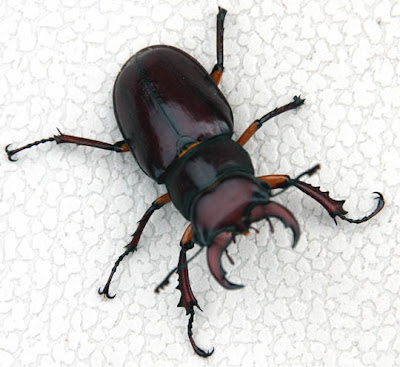The shoebill (Balaeniceps rex) is a large bird (4 feet tall, wingspan of 7.7 feet) that hails from tropical east Africa. It gets its name from having a shoe-shaped bill.
I've posted on this bird before, and even now I can't really see the shoe-shape of the bill. It's bill is very distintive, but I'm just not seeing it. That duck sure is getting an up-close look, though--someone should ask it.
I assume that since shoebills dine mainly on lungfish and other fish in their native swampland that the duck is going to be just fine (besides, that duck has an ankle tag, which leads me to think this image was captured at a zoo).
Thanks for the info, vaguegirl.
UPDATE: Anonymous discovered who originally took this photo (see link below). It was taken at the San Diego Wild Life Park. The shoebill wasn't trying to eat the duck, but simply trying to move the duck from its path.
Photo source: Mark Kay












































